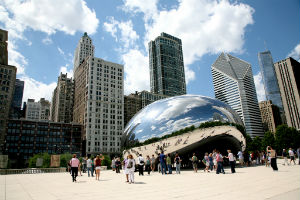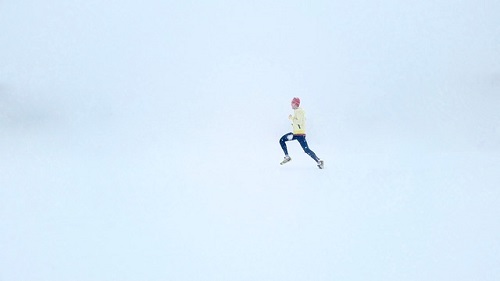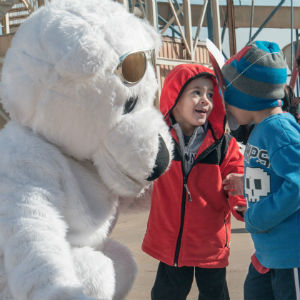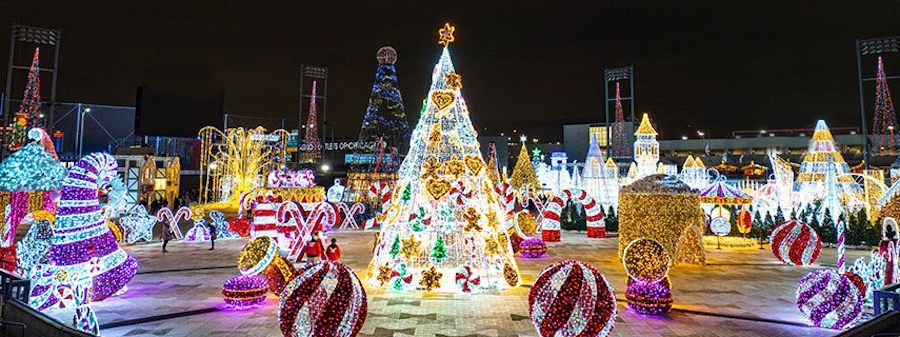- Details
 Chicago set a tourism record in 2017 as an estimated 55.2 million visitors made a stop in the Windy City, according to initial estimates.
Chicago set a tourism record in 2017 as an estimated 55.2 million visitors made a stop in the Windy City, according to initial estimates.
The visitor total is up 2.5 percent from the previous year, bringing with it economic benefits for the city and the state.
Travel Daily News estimated that the tourism industry supported 146,500 jobs in 2017, a 17 percent increase since 2011.
Hotels were a major beneficiary of the upturn in visitors, as there was a 7.6 percent increase in occupancy during the peak tourism season of June to September. In all, hotels saw a 3.3 percent increase over 2017, according to the city. The city also saw five new hotels open in 2017, with eight more scheduled to open this year.
- Details

According to a survey conducted by YouGov, a significant portion of Americans are resolving to eat better and exercise more in 2018. Those focusing on health and wellness this year should visit the Fay Pickering Memorial Trails at Mill Creek Park in Marshall, where over nine miles of running, hiking and mountain biking trails are open 24 hours a day, all year long.
Four single-track trails snake through the old growth forests near Mill Creek Lake at an average grade of nine percent and a maximum grade of 64 percent. The trail system is classified as intermediate, but individual trails can be modified for runners, hikers and bikers of all skill levels from beginner to expert.
Those who enjoy outdoor recreation with their canine companions will be glad to know that the park allows dogs to roam off-leash. Motorized vehicles and horses are prohibited, and trail users are discouraged from using the trail in wet conditions.
For the truly brave, the Ninth Annual Clark County Polar Bear Dare Trail Run will take place on Jan. 13, 2018. The run includes 10.3-mile, 3.9-mile and half-mile races followed by a mountain bike race. The event is expected to take place regardless of weather, giving athletes an opportunity to compete in unique conditions.
The Fay Pickering Memorial Trails system is considered one of the best in the state. It is about a 20-minute drive from I-70 in Clark County and features a restroom and pavilion at the trailhead near the dam at Mill Creek. For more information, call 217-889-3901.
- Details

If you have never experienced ice sculptures or ice sculpting competitions, Rockford holds the High School and State Competitions. You can walk through and watch the ice sculptors, or you can drive through and view from the warmth of your car. The competitions are held at Sinnissippi Park. Admission is free and you can see ice sculptors creating their master pieces from sunrise until about 10:30 p.m. This is an activity the entire family can enjoy.
The High School Competition is held Jan. 18-20 and the State Championship will be held Jan. 17-20. For more information about this event, click here.
Another fun winter activity that you may have heard of is the Polar Plunge. This event supports the Special Olympics in Illinois by raising money for the events and programming the organization provides for the 42,000 athletes across the state. Participants raise a minimum of $100 in exchange for jumping into cold waters in the middle of winter. All the proceeds benefit the Special Olympic Athletes.

- Details
The yearly descent into another Midwestern winter need not be a cause for hibernation. This winter, snow and ice will cause some people to spend longer hours in the comfort of their homes, waiting for an eventual return of spring to venture back out again. However, in parks across the state of Illinois, winter weather is no deterrent from enjoying the great outdoors and the many activities that are only possible when the air is cold and the ground is blanketed in snow.
This month we are featuring the Hennepin Canal State Trail as our park of the month due to its unparalleled access to snowmobiling.
Snowmobiling is a uniquely thrilling way to take in winter scenery. The Hennepin Canal State Trail, located just outside of Sheffield in Western Illinois, is one of the best places to enjoy snowmobiling in Illinois. Hennepin Trail is home to Illinois’ longest snowmobile trail, which runs for 91 miles along the canal’s old tow path, offering unique views of the canal’s historic locks and viaducts.
When there are at least six inches of frost in the ground and at least four inches of snow on the ground, the trails are open to snowmobiles. Riders may travel on the ice at their own risk when snowmobiling is allowed. Park staff posts this information at the site access areas and on the park’s telephone system at (815) 454-2328.
Parking, toilets, and a warming house are located at the visitor center just east of Sheffield (RR #2, Box 201 Sheffield, IL 61362). Other registration points and parking are located at Lock 24 near Geneseo, Lock 23 near Atkinson, Lock 11 near Tiskilwa, Route 92 Bridge 56 near Tampico, Route 88 Bridge 45 south of Rock Falls and Bridge 15 near Sheffield. Because they are supported by snowmobile registration fees, all public snowmobile trails in Illinois are free to use.
During the warmer months, Hennepin Canal State Trail is ideal for biking, equestrian riding, fishing, hiking and hunting. The park is also open to boats and canoes on the canal from which the trail takes its name. Built between 1892 and 1907, Hennepin Canal was the first American canal built entirely out of concrete. Visitors to the trail still enjoy learning about the canal’s large and innovative locks.
The end of temperate weather does not mean the end of outdoor fun in Illinois. Schedule your visit to Hennepin Canal State Trail before the winter wonderland warms up!
- Details
 The Grant-Grusecki family of Park Ridge has a special holiday tradition that is guaranteed to light up your world – literally.
The Grant-Grusecki family of Park Ridge has a special holiday tradition that is guaranteed to light up your world – literally.
The family puts on an annual Christmas light show, which features thousands of lights that are synchronized to music.
Viewers can enjoy five music and light shows by tuning into 98.1 FM. The family also features and illustrated show on the chimney and roof of their home that is in sync with the music.
The shows include a special tribute to the military, Michael Bublé’s “Holly Jolly Christmas””, Prince, “Beauty and the Beast” and Darlene Love’s “All Alone on Christmas.”
The family also sets up lawn displays and a sled for visitors to take photos with. But don’t worry, you can still hear the music from speakers on the lawn while you’re at those attractions.
More Articles …
- Experience the holiday magic by visiting Santa's best friends at Snowman's Reindeer Farm
- Aurora and Elgin make top 10 in safest cities in the country for Halloween
- Record tourism spurs economic growth in Illinois
- Park of the month: White Pines State Park
- Prepare to be spooked at some of the scariest haunted houses in America



